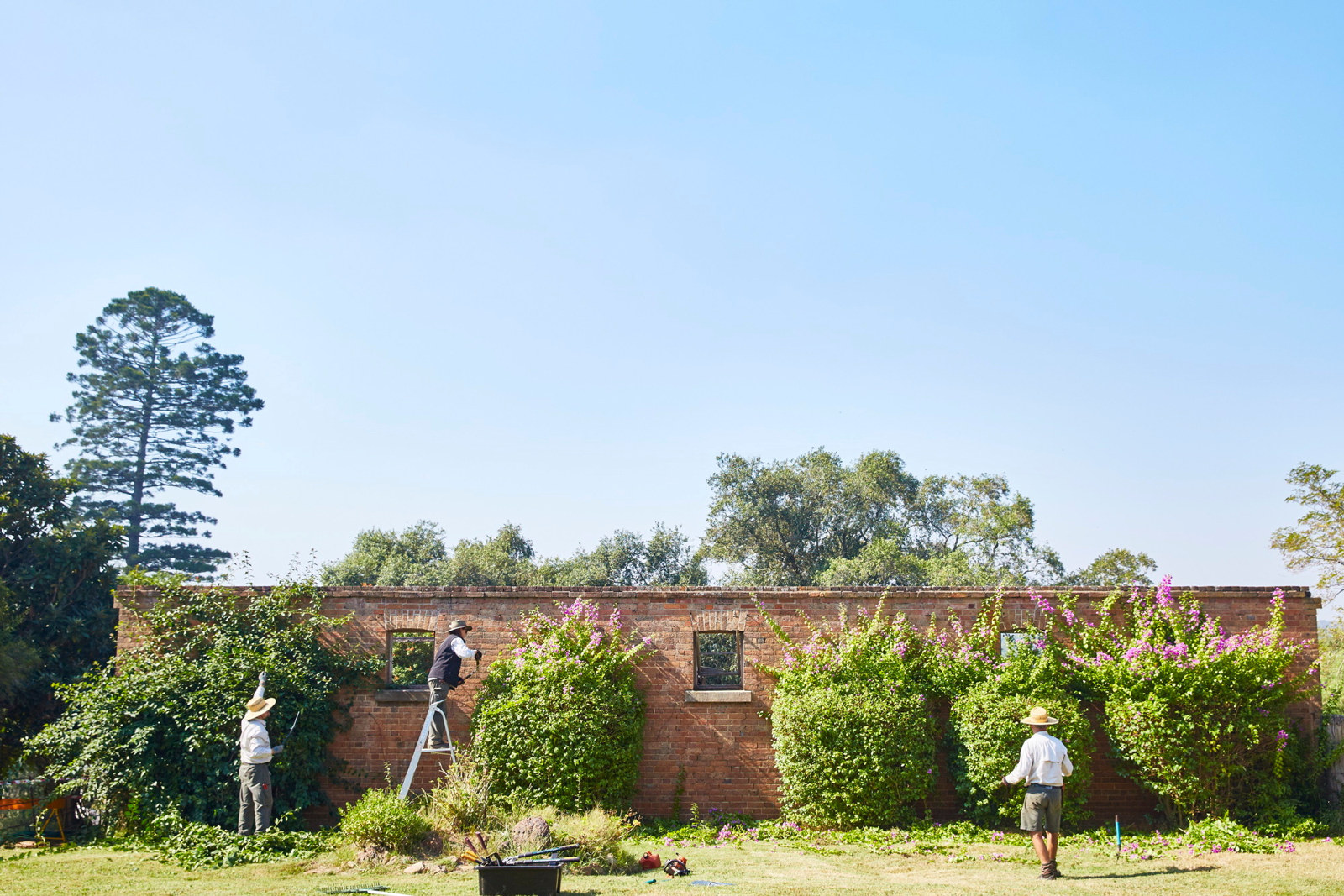Sumptuous cape bulbs light up late summer gardens
Belladonna Lilies and Crinum Lilies are tough bulbs that never say die and can survive years of neglect. Each summer they produce sumptuous flowers with a ravishing perfume that can fill a garden with scent. Once widely grown in home gardens they are now more often seen as survivors at derelict sites or in the collections of Amaryllid fanciers.
The Belladonna Lily or Naked Lady (Amaryllis belladonna) survives a baking hot summer by going dormant (a rest or non-growth period), with only the necks of the plump bulbs appearing just above the soil. These lilies seem to relish tough conditions and will survive in a hot dry situation for many years, gradually growing into massive clumps. The clusters of stunning flowers - in various shades of shocking pink, carmine and white - are held 50cm above the ground on a leafless stalk (known as a scape) lasting two to three weeks. There are pretty variations in flower colour and form including striped bicolours and some with wavy petals.
At Elizabeth Farm and Vaucluse House we grow them in mixed borders with other herbaceous perennials and shrubs. The lush-looking foliage that grows after the flowers have finished makes a fine contrast with other foliage plants in the garden. Our SLM Colonial Plants Database lists Belladonna in the Macarthur's Camden Park Nursery Catalogue for 1843 and John Carne Bidwill, a prominent colonial horticulturist and plant explorer who worked for William Macarthur, carried out crosses between Belladonna and the related Brunsvigia in 1841.
Crinum Lilies, or Natal Lilies (Crinum moorei) are large herbaceous perennials that are stalwarts of old gardens, able to survive for decades without any attention. The name 'moorei' honours Dr David Moore, Director the Glasnevin Botanic Garden in Dublin, who was the first to germinate and bring plants to flower in cultivation. David Moore's brother, Charles Moore was the director of the Sydney Botanic Garden from 1848-96.
Over time the Crinum's fat bulbs develop into large clumps. In addition to their beautiful nodding perfumed flowers, Crinums grow striking large rosettes of foliage up to a metre high. Unlike Belladonnas, Crinums prefer light shade and damp soil to grow best. The flowers arrive at the end of summer and, even though each individual flower only lasts a day or two, each inflorescence produces a succession of blooms over several weeks. A mass planting in flower is a spectacular sight.
By the end of February, the foliage browns off and dies down as the bulbs prepare for a long dormant period through autumn and winter. Unfortunately Crinum Lilies are prone to attack by the caterpillars of the Amaryllid Moth, or Lily Caterpillar Moth (Spodoptera picta). These caterpillars usually show up shortly after flowering as the adult moths are attracted to the flowers. The voracious caterpillars can demolish an entire clump of Crinum Lilies in just a few days; after which they will sometimes move on to devour Clivias. Chemical sprays are not very effective on caterpillars so the best remedy is to pick off the caterpillars as soon as you see them!
You can divide up clumps of Crinum bulbs to start more plants in the garden but they often sulk for a year afterwards, as they seem to resent disturbance. The best time to lift and divide bulbs is when they are dormant.
Like Belladonna Lilies, Crinum Lilies originate from South Africa, where they occur in coastal dune forests, and are members of a large family of bulbs called Amaryllidaceae that includes other popular garden plants such as Clivias, Hippeastrums and Brunsvigias. Throughout the 19th century Capetown, or Cape Colony, was a port visited by every ship en-route to Australia and there was extensive trade in African plants that were brought to Australia for agriculture and horticulture.
Belladonna Lilies and Crinum Lilies are not sold by mainstream plant nurseries and garden centres, but they can be found at on-line auction sites and by mail order from specialist bulb growers
Published on
Plant your history
Browse all
Plant your history
Beautiful bountiful bamboo
One of the most recognisable plants growing at Museums of History NSW today is bamboo. This colourful plant has a long history in colonial gardens

In the pink at Elizabeth Farm
Amid the late summer bounty in the garden at Elizabeth Farm, the crepe myrtle is the undoubted star of the show

Plant your history
Acanthus - an apt symbol for The Mint
Look at any classical building today, anywhere in the world and chances are you will find an acanthus leaf lurking somewhere

Plant your history
In good hands
A week with the Gardens team shows historic garden conservation at its most hands-on
